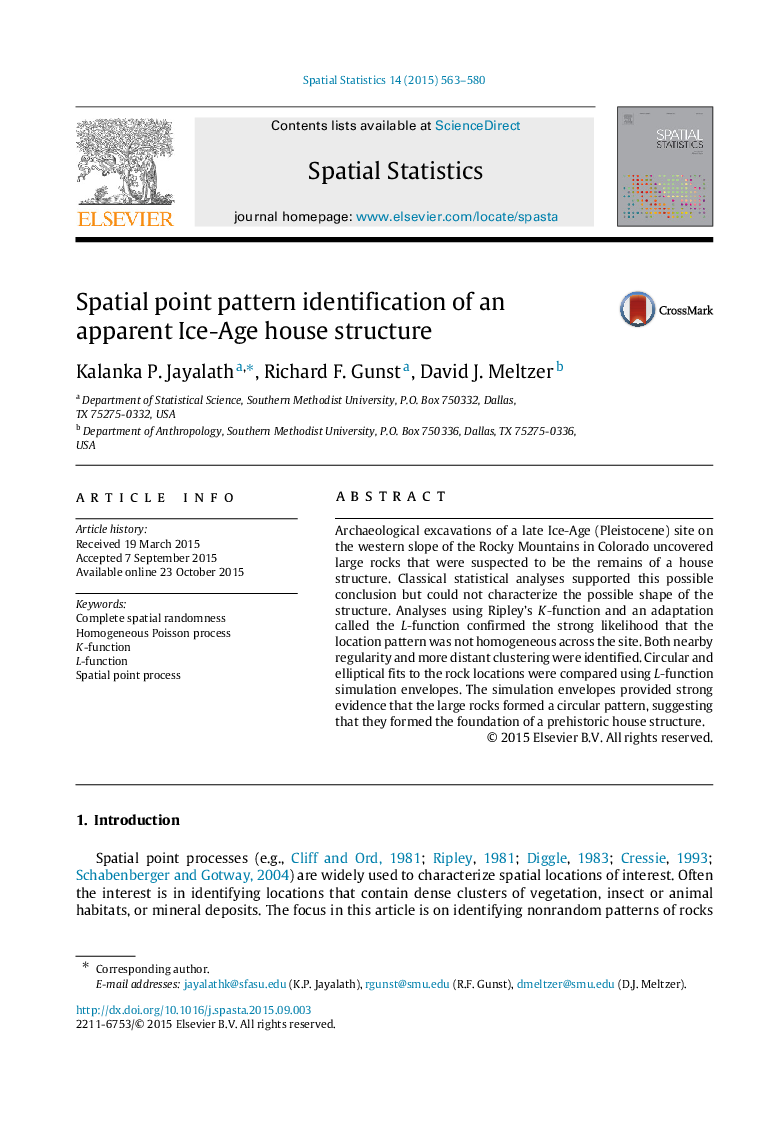| Article ID | Journal | Published Year | Pages | File Type |
|---|---|---|---|---|
| 1064499 | Spatial Statistics | 2015 | 18 Pages |
Archaeological excavations of a late Ice-Age (Pleistocene) site on the western slope of the Rocky Mountains in Colorado uncovered large rocks that were suspected to be the remains of a house structure. Classical statistical analyses supported this possible conclusion but could not characterize the possible shape of the structure. Analyses using Ripley’s K-function and an adaptation called the L-function confirmed the strong likelihood that the location pattern was not homogeneous across the site. Both nearby regularity and more distant clustering were identified. Circular and elliptical fits to the rock locations were compared using L-function simulation envelopes. The simulation envelopes provided strong evidence that the large rocks formed a circular pattern, suggesting that they formed the foundation of a prehistoric house structure.
